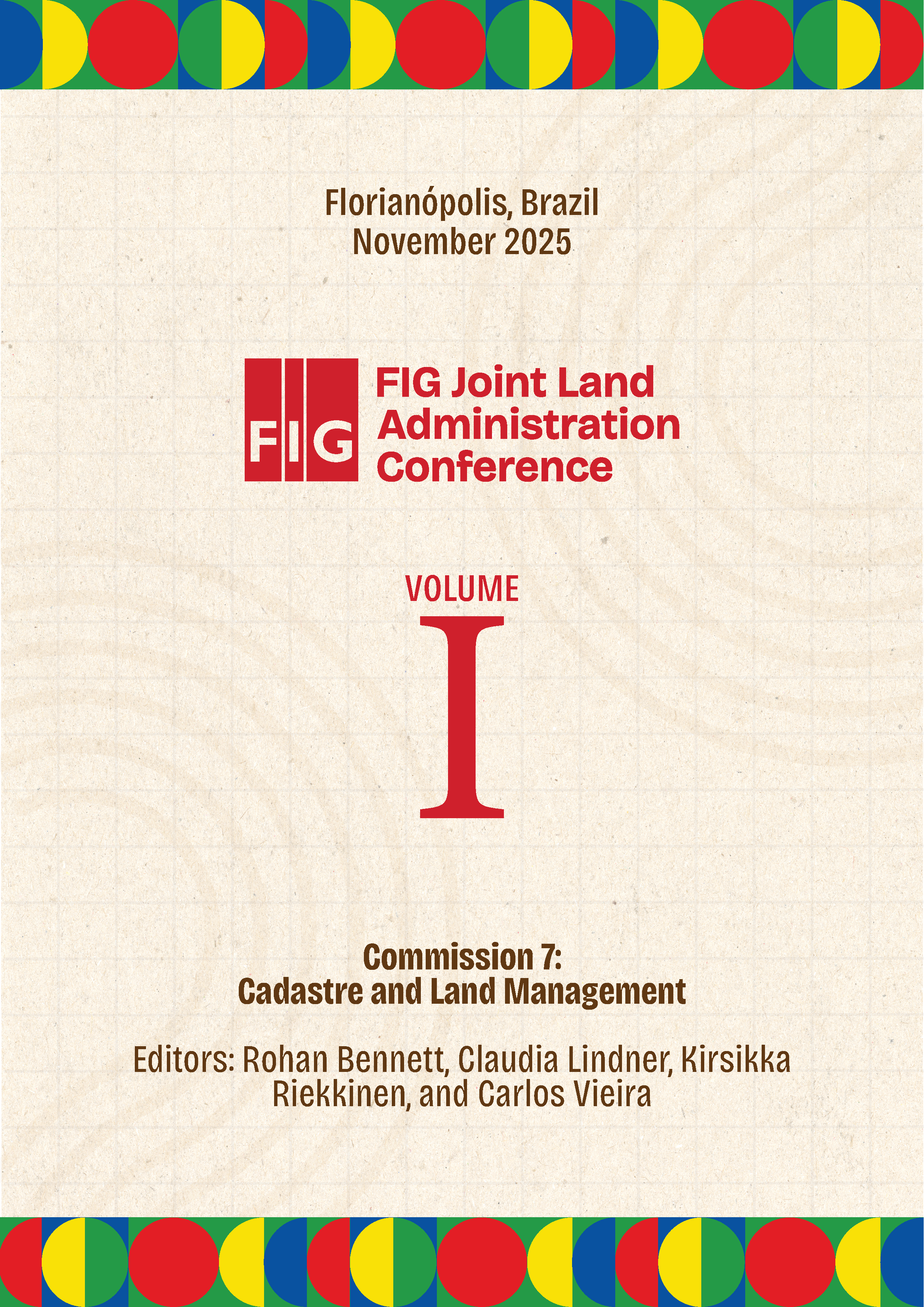Analysis of the Accuracy of Orthophotos Generated by UAS with RTK Sensors for Application in Urban Land Regularization (REURB)
Mots-clés :
UAS, Photogrammetry, Land Cadastre, REURBRésumé
Unplanned urban occupation has increasingly required public authorities to establish land-use planning policies. Article 182 of the 1988 Federal Constitution determines that urban policy must guarantee the social functions of the city and ensure the well-being of its inhabitants. Based on this principle, several laws have been enacted, including Law No. 10,931/2004 (extrajudicial area rectification), Law No. 13,105/2015 (extrajudicial adverse possession), and mainly Law No. 13,465/2017, which created the Urban Land Regularization (REURB). Originating from Provisional Measure No. 759/2016, this law expanded the demand for geospatial data and technologies, requiring municipalities to perform georeferenced topographic and cadastral surveys. According to Decree No. 9,310/2018, property boundary coordinates must present a positional error below 8 cm. Although remote sensing surveys using satellites, aircraft, or RPAs (Remotely Piloted Aircraft) are increasingly applied in cadastral development, current Brazilian standards such as ABNT NBR 13133:2021 and ABNT NBR 17047:2022 do not specifically regulate three-dimensional surveys for regularization purposes. Meanwhile, aerial photogrammetry with UAS has gained prominence due to advances in GNSS positioning (RTK, Network RTK, and PPK), enabling high accuracy even with limited ground control points. These technologies reduce costs and optimize operations, yet regulations still lack criteria for evaluating the accuracy of orthophotos generated by drones. The geometric reliability of orthophotos depends on parameters such as ground sample distance (GSD), flight altitude, and flight planning (overlaps and oblique images). These factors directly influence parcel boundary interpretation and the legal security of cadastral data. In this context, the present study proposes a comparative analysis of orthophotos generated with different flight configurations using the DJI M3M (Matrice 3 Enterprise) with RTK. Four products were created: (1) 1 cm GSD with longitudinal flight; (2) 2 cm GSD longitudinal; (3) 5 cm GSD longitudinal; and (4) 2 cm GSD cross-flight with oblique images (-60º). Checkpoints surveyed with a geodetic GNSS receiver will be used to assess positional accuracy. Parcel boundaries will be extracted from each orthophoto, and the coordinates of vertices compared to one another and to field measurements. The objective is to evaluate the geometric accuracy of photogrammetric products and identify the operational conditions under which they comply with legal requirements for REURB. This research contributes to defining feasible technical parameters for the reliable use of RPAs in urban land regularization processes in Brazil.


